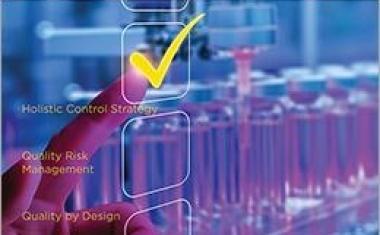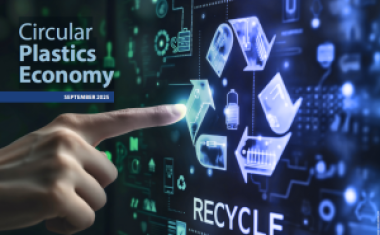Communicating Nanomaterials


Polarizing Debate - From lighter materials for cars, stronger wind turbine blades to better insulation for homes, nanomaterials help create innovative products and improve processes in many sectors.
The results help build sustainable, competitive industries while improving quality of life in Europe. Polarization of the debate on nanomaterials, however, is creating a gap between innovation opportunities on the one hand and safety concerns on the other. New mindsets are needed to unlock the European nano debate.
Nanomaterials bring tangible benefits to society and are considered key enabling technologies in virtually all industries. They play a growing role in developing innovative solutions to societal challenges, for example in the fields of energy, water and mobility. At the same time, weighing in the potential risk factors associated with specific applications of nanotechnologies is crucial to enable society to benefit from their development.
Balancing the need to address worker safety, consumer health and environmental concerns while building public awareness and acceptance for nanotechnology applications is a challenge for all actors involved in the nano debate. Communicating the benefits of nanomaterials is as important as being ready to discuss risks and uncertainties. The chemical industry is willing to address both aspects openly.
Ensuring Safety
Ensuring that nanomaterials are produced, used and disposed of in a safe and sustainable way is essential to ensure their contribution to societal benefits. The European chemical industry, represented by Cefic, sees the existing risk assessment paradigm and regulatory framework based on the precautionary principle as a solid basis for this. The EU has in place a comprehensive regulatory framework underpinned by the precautionary principle. It can be implemented and, where necessary, its guidance can be adapted to effectively regulate nanotechnologies and nanomaterials.
Cefic also participates in setting harmonized standards and methods by contributing to the work of international bodies, such as the Organization for Economic Co-operation and Development (OECD), the International Standardization Organization (ISO), the European Committee for Standardization (CEN) and the European Union. Industry is already involved in reviewing testing procedures and methodologies to adapt them to nanomaterials when appropriate. This is done through the OECD testing program to ensure scientific consensus.
In addition, industry takes part in EU research projects aimed at raising the overall knowledge level about nanomaterials. Results of these activities are also available via dedicated websites, such as the EU NanoSafety Cluster website (www.nanosafetycluster.eu).
As legal frameworks are updated, the chemical industry contributes to providing information and expertise to improve standardization recommendations and guidance, for example under Reach or food legislation. Improving measurement techniques remains a challenge to ensure affordable, robust and standardized methodologies.
Focus On Communication
Nanomaterials represent a wide variety of substances with specific properties. Some of them have been in use already for decades, such as carbon black in tires, while some are new, such as carbon nanotubes. As stated by the scientific committee of the European Commission (SCENIHR) in their 2009 opinion, nanomaterials are similar to normal substances in that some may be toxic and some may not. "Nano" is an indication of scale, not a hazardous property.
It is therefore not pertinent to speak about a generic nano effect, but rather a case-by-case evaluation has to be made. The wide range of potential applications means that there is no one-size-fits-all solution for communicating on nanomaterials.
Making information on nanotechnologies and nanomaterials easily digestible and understandable for the public is a challenge that industry, authorities and other actors in the debate are actively addressing. Sharing the wonders of nanotechnologies means telling a rather complex story that also includes potential uncertainties. Listening to stakeholder concerns, addressing public requests for information and engaging in open dialogue are important components of the stakeholder dialogue process.
Tools and channels for communication and transparency on nanomaterials exist. It remains up to industry to ensure availability of adequate and relevant information to downstream users, customers, regulatory authorities and other stakeholders. This information is transmitted in different ways, including safety data sheets, classification and labeling notifications, codes of conduct, registration dossiers and stakeholder dialogues. While increasing transparency is important, a line should be drawn regarding confidential business information which can only be made available to the authorities for competitiveness reasons.
To make information available to the public, some companies and national chemical industry associations have developed detailed information tools through dedicated websites. Cefic members have worked on an extensive document under the Responsible Care program, bringing together the various available references linked to nanomaterials safety. In addition, partnerships with downstream industries are key to ensure common understanding on how nanomaterials should be handled and how to implement legislation in an appropriate way.
Europe Cannot Miss the Boat
The development of nanotechnologies and nanomaterials is a global issue. The worldwide chemical industry association, the International Council of Chemical Associations, or ICCA, contributes to the international debate on nanomaterials within the SAICM project - the Strategic Approach to International Chemicals Management. This voluntary program aims to ensure that developing countries have access to similar information and tools as do developed countries as far as chemicals management is concerned. The chemical industry is working diligently towards acceptance of common regulatory principles for chemicals. These should equally be valid for nanomaterials.
In parallel with international chemicals policy development, research and innovation around nanotechnologies and nanomaterials is speeding up around the globe. The fear is that Europe will lag behind. It mustn't. To meet the great challenges facing Europe today, particularly in energy efficiency, health and welfare, the development of nanotechnologies is essential. As key enabling technologies in several industries, nanotechnologies also contribute to keeping and creating skilled jobs in Europe.
To make sure Europe can help bring the next great breakthroughs for safe, sustainable nanomaterials, it is important that the debate on these potentially game-changing materials achieves the right balance between benefits and risks. The chemical industry is committed to working with its partners in an open and responsible way to make this happen.
most read

ISPE Good Practice Guide: Validation 4.0
The Validation 4.0 Guide provides a comprehensive approach to ensuring product quality and patient safety throughout a pharmaceutical product's lifecycle.

Q1 2025 Chemical Industry: Diverging Trends
The first quarter of 2025 highlights a continued divergence between the European and US chemical industries.

US Tariffs Fatal for European Pharma
Trump's tariff policy is a considerable burden and a break with previous practice.

Lead or Lag: Europe’s AI Materials Race
How AI and Robotics are reshaping the race for materials discovery.

ECA Foundation Aims to Become Largest Pharma Association for GMP/GDP Compliance
The ECA Foundation, one of the most important not-for-profit organizations for regulatory expertise in the pharmaceutical industry, aims to become the largest independent GMP/GDP organization in the world.










